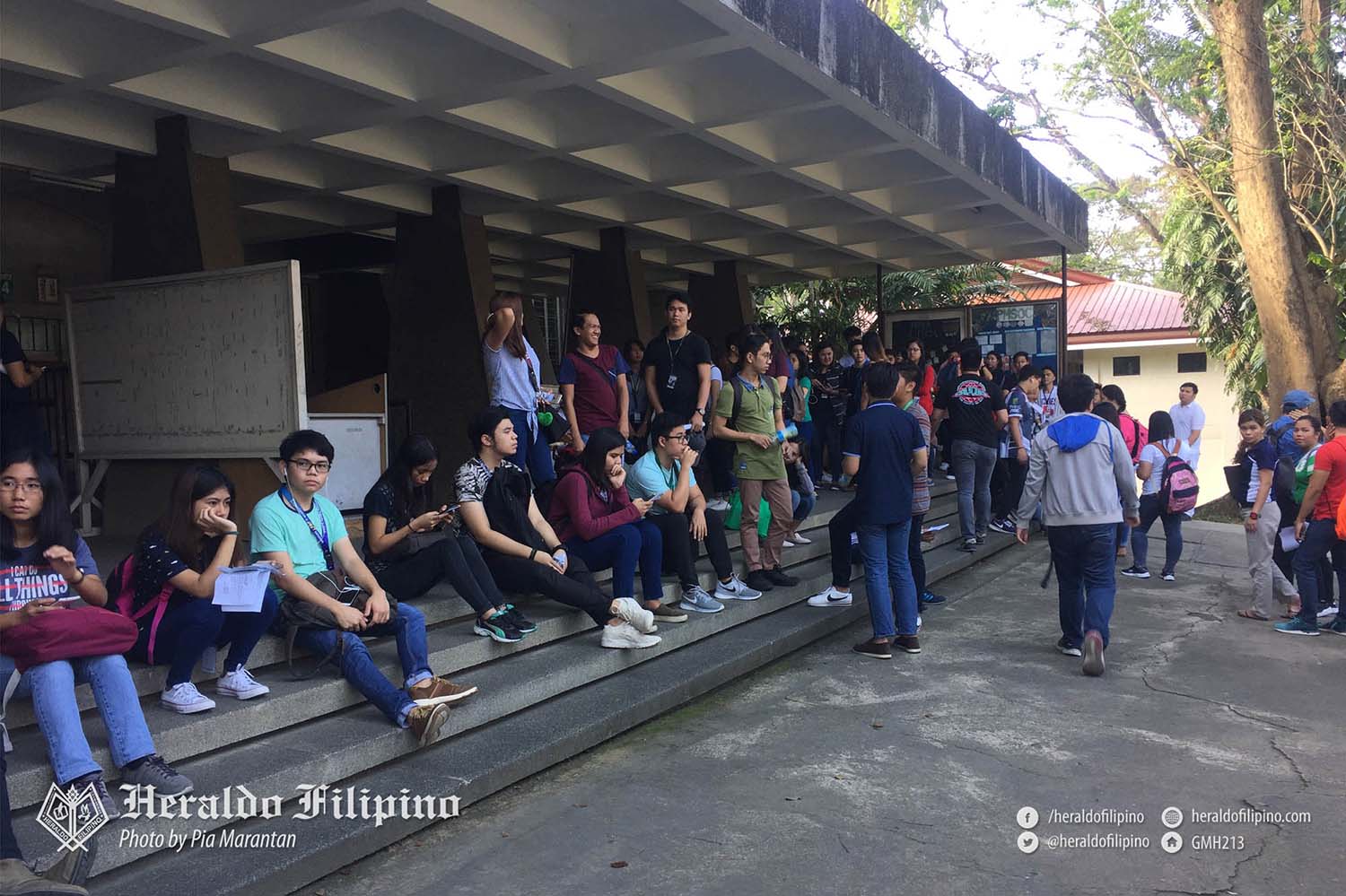OUR, students address last day of enrollment queues
On the last day of enrollment, January 31, students stood in line for several hours, many of whom were waiting for at least three to four hours, to finalize their transactions at Counter 1 outside Gregoria Montoya Hall (GMH).
To accommodate all the students waiting their turn, the Office of the University Registrar (OUR) extended its office hours until 9 PM on the said day.

Students react
Majority of the students, many of whom are irregular, interviewed by the HERALDO FILIPINO shared that the cause of their late enrollment was due to waiting for the availability of their respective tutorial classes.
According to George* from the College of Business Administration and Accountancy (CBAA) who waited in line for four hours, he initially prepared his request for tutorial classes on the first day of classes on January 22. However, factors such as sick leaves of particular staff and not being able to find certain professors caused him to reach the last day of enrollment.
For Regine* from the College of Liberal Arts and Communication (CLAC) who waited three and a half hours for the OUR to register her for tutorial classes, the line on Wednesday was the “worst enrollment line” she had experienced in the campus.
As to how the OUR can improve their services in the future, the students shared their sentiments as well.
Ronald* from the College of Tourism and Hospitality Management, who waited for four hours, mentioned the need for more available counters for students, considering that it was the last day of enrollment.
Dustine* from CBAA, who had been waiting for two hours for her tutorial classes’ approval, suggested that “more personnel and more computers” be provided.
Sharing this concern, Edrem* from the College of Engineering, Architecture, and Technology noted, “Dalawang babae lang [ang] nag–a-assess ng concerns ng students e ang dami namin, so kailangan nila ramihan ‘yong tao.”
OUR offers explanation
According to University Registrar Paulino Gatpandan, the majority of transactions came from irregular students with concerns regarding their practicum or requests for tutorial classes and On-the-job (OJT) training schedule.
Tutorial classes were made available upon request to the OUR due to the lack of petitioned classes for irregular and graduating students. Given the lack of first and second year students this academic year, a number of irregular students require tutorial classes.
As to why certain students processed their request on the last day of enrollment, Gatpandan explained that a shorter timeframe was given for the adding and dropping of subjects in comparison to previous academic years (AYs).
OUR considered shortening the timeframe due to the concerns of certain faculty members regarding students who missed weeks of classes at the beginning of the semester.
“‘Yong concern ng ibang mga faculty is they already teach a lot and then nag-quiz na, nag-exam na. Then tsaka pa lang papasok ‘yong ibang students because kaka-add lang nila,” Gatpandan furthered.
However, Gatpandan explained that they are not tasked to decide a student’s class schedule. Instead, students must either request the form of Application for Tutorial Classes from the OUR upon request or download a softcopy from the DLSU-D website, which must signed by their respective college deans and scheduled by the faculty handling the tutorial class. The request then returns to the OUR for manual input in the student’s schedule. These tasks are assigned to the students in question requesting for tutorial classes, not to the OUR.
“Ang isang dapat lang ma-address ‘don is that for, sabagay pasukan na rin naman no’ng nagsimula during the time of enrollment, the chair should always be available as well as the dean to handle student concern,” Gatpandan added.
He furthered that students could not add subjects for Trans1 because the subjects had initially been registered per block section due to regular students losing their respective slots. That is also why the OUR provided two days lead time for students to pay Trans1 and their Trans2 to be opened.
For the practicum, the concern stems from a student’s OJT schedule coming into conflict with a subject schedule upon enrollment. As Gatpandan explained it, “For example, (your OJT) is scheduled Monday to Friday and then you will enroll for two additional subjects (on any day of the week), it will not be handled by the system since the online enrollment system will tell conflict in days. So in that case, they have to seek for the assistance of our personnel so that the time could be somewhat overwritten.”
As a solution, the OUR will be coordinating with the Information and Communications Technology Center (ICTC) next enrollment period to remove the day of OJT when plotting their schedule.
“Our proposal is that ‘di na lalagyan ng [day] ‘yong practicum para at least some other subjects na idadagdag pa ng estudyante can be added online na rin. Kasi ‘yon ‘yong problema nila, di nila ma-add kasi conflict sa day,” the university registrar said.
The OUR may allow an extension beyond the last day of enrollment. However, Gatpandan clarified that it will depend upon a “case to case” basis, stating that those who already paid but were not able to be entertained may be given consideration by the OUR.
Regarding what the students can do in order to avoid long lines in the next enrollment period, Gatpandan advised them to follow the schedule set by the University and to have their own copy of their curriculum as the online enrollment is prone to deficiencies.
*Last names have been concealed as per request by the interviewees.




